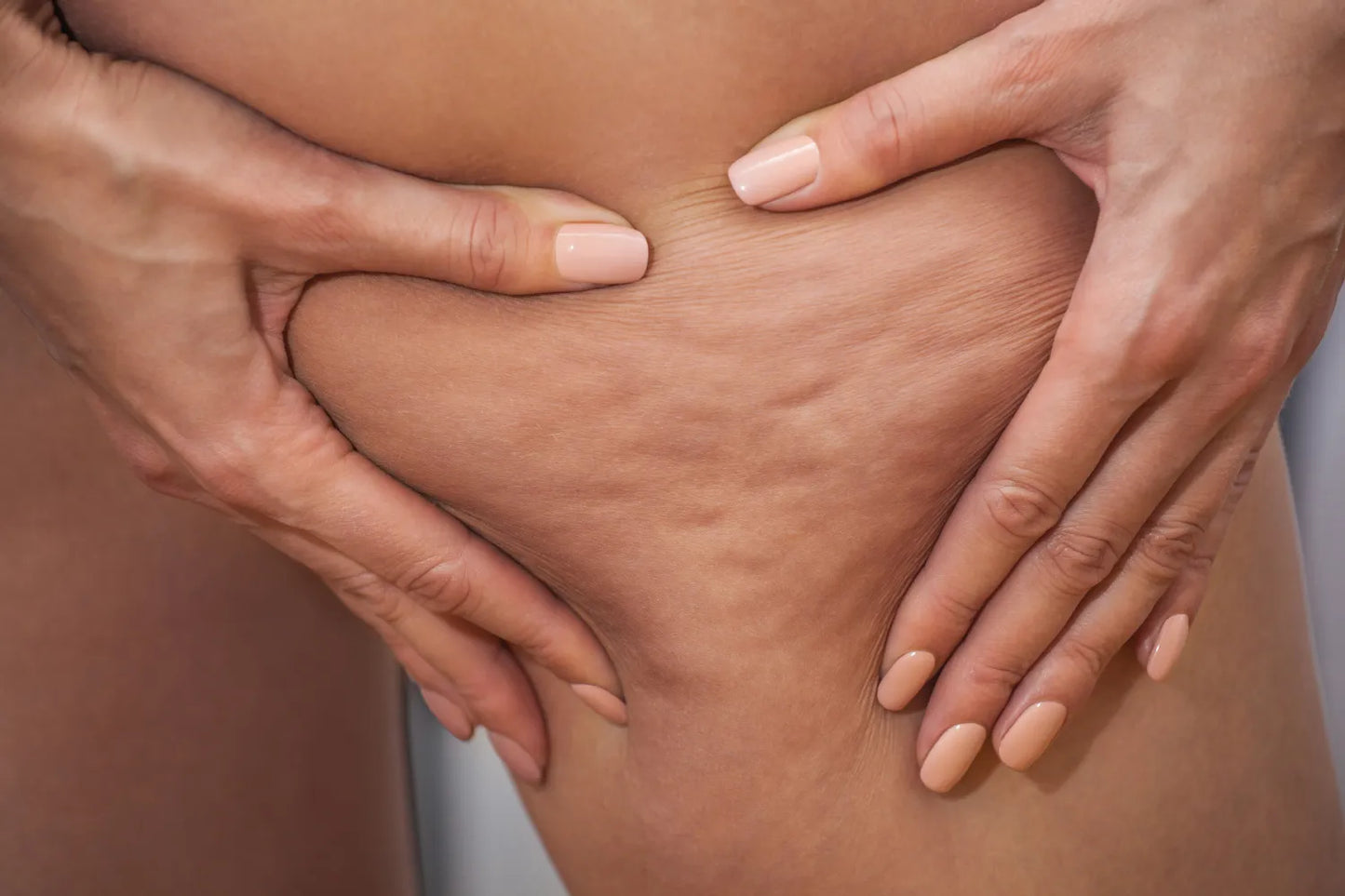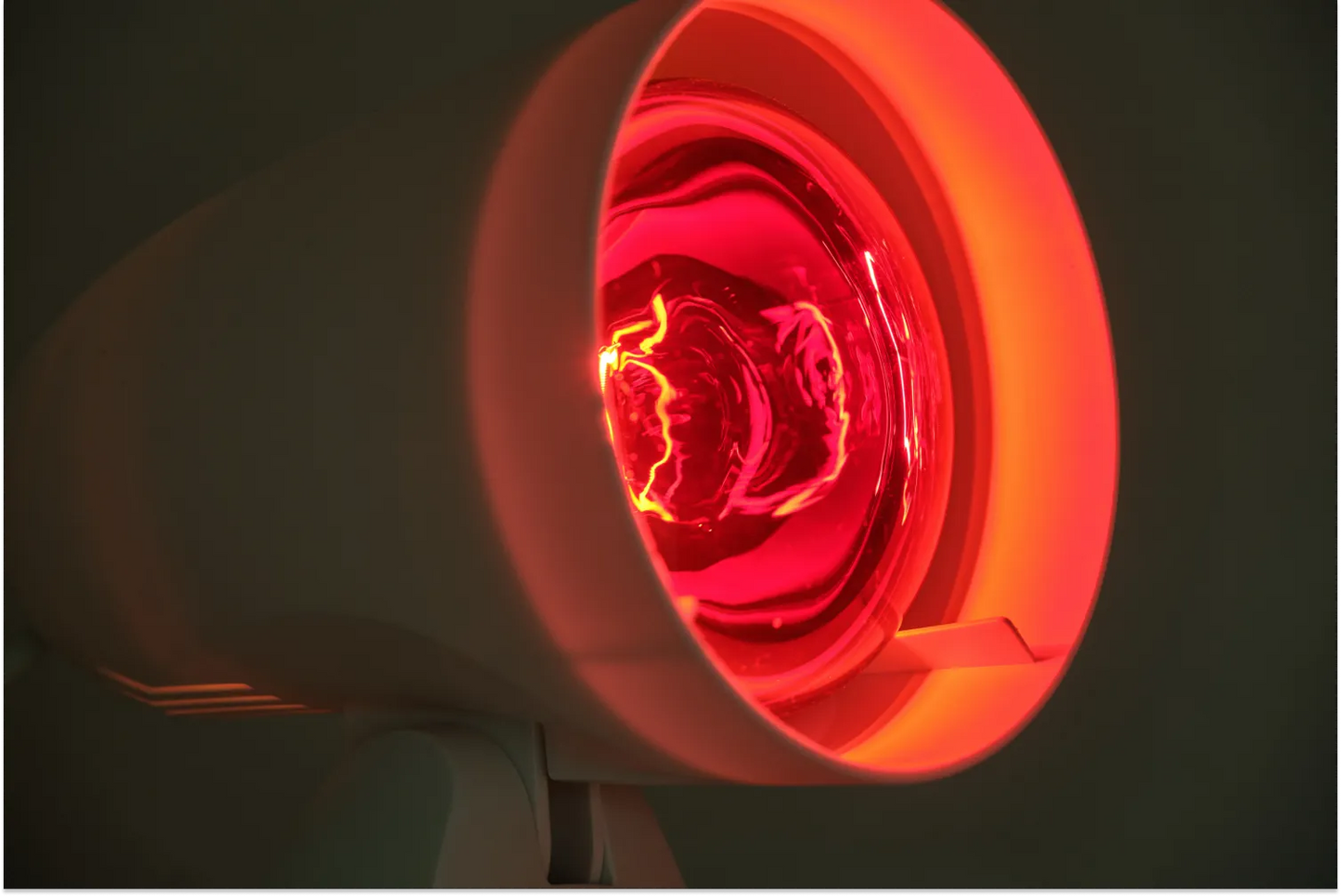
Lipedema vs. Cellulite: What Are the Differences?
If you've ever noticed lumpy, bumpy areas on your thighs, buttocks, or arms, you might have wondered if you're dealing with cellulite — or if it’s something else entirely. For example, one condition that can often be mistaken for cellulite is lipedema.
But what's the difference between the two? Let's dive into the nitty-gritty of lipedema and cellulite, the differences, and what you can do to support your body.
What Is Lipedema?
Often confused with lymphedema, lipedema is a chronic condition affecting many women worldwide. Characterized by the disproportionate accumulation of fat cells in the legs, thighs, buttocks, and occasionally the arms, lipedema is a distinct, often hereditary condition.
This buildup of fat is different from typical weight gain. In lipedema, the fat cells in certain areas of the body grow larger and multiply, creating a distinct, often symmetrical, enlargement of the affected areas. It's important to remember that lipedema is not a result of overeating or lack of exercise but a medical condition that requires appropriate management.
Symptoms and Stages of Lipedema
Lipedema progresses through three distinct stages, each with its unique set of symptoms.
- Stage 1: In the initial stage of lipedema, the skin remains smooth, but the underlying fat tissue starts to become grainy. The individual may start noticing a disproportionate increase in fatty tissue, particularly in the lower body.
- Stage 2: As lipedema progresses, the skin starts to feel nodular, similar to the texture of an orange peel. The fatty tissue continues to increase, and the disproportion between the lower and upper body becomes more apparent.
- Stage 3: In the most advanced stage of lipedema, large fat lobules begin to form. This leads to significant changes in body shape, and mobility can be affected at this stage. Pain and tenderness often accompany these physical changes.
Who Is Most Commonly Affected?
Lipedema primarily affects women, with onset often around periods of hormonal change like puberty, pregnancy, or menopause. While the exact cause of lipedema remains unknown, there appears to be a genetic link, as it often runs in families.
What Is Cellulite?
Unlike lipedema, cellulite is a common skin condition that affects up to 90 percent of women at some point in their lives. It's characterized by a dimpled or lumpy appearance on the skin, often resembling cottage cheese or an orange peel. This happens when fat cells push against the connective tissue beneath the skin's surface.
While cellulite can appear anywhere, it's most commonly found on the thighs, buttocks, and abdomen. It's worth noting that cellulite is completely harmless and does not indicate an underlying health issue. However, many people seek treatment for cellulite due to cosmetic concerns.
Causes of Cellulite
Several factors contribute to the development of cellulite, including:
- Hormones: Changes in hormone levels can influence the distribution of fat in your body, the structure of connective tissue, and blood circulation — all factors that can contribute to the appearance of cellulite.
- Genetics: Factors like gender, race, metabolic rate, and how your body distributes fat can all influence your likelihood of developing cellulite.
- Aging: As we age, our skin naturally loses elasticity. This can make the fatty tissue underneath more visible, leading to the appearance of cellulite.
- Diet: A diet high in fat, carbohydrates, and salt but low in fiber can contribute to the development of cellulite.
- Sedentary lifestyle: A lack of physical activity can increase the risk of developing cellulite. Regular exercise can help improve muscle tone, circulation, and overall body composition, potentially reducing the appearance of cellulite.
- Tight clothing: Wearing tight clothing, particularly around the waist, can limit blood flow and contribute to the formation of cellulite.
Who Is Most Commonly Affected?
While both men and women can develop cellulite, it's more common in women. This is due to differences in how fat, muscle, and connective tissue are distributed in women's skin. Furthermore, hormonal fluctuations experienced by women, such as during menstruation, pregnancy, and menopause, can also influence the onset and severity of cellulite.
What Are the Differences Between Lipedema and Cellulite?
While lipedema and cellulite can sometimes appear similar, they are distinct conditions with different causes and characteristics. Understanding these differences can help you make sure you get the right diagnosis and treatment.
Differences in Causes
Lipedema is often linked to hormonal changes and heredity. It is a medical condition that causes an abnormal accumulation of fat cells in certain areas of the body, usually affecting both sides equally.
On the other hand, cellulite is more of a cosmetic issue caused by the structure of fat, muscle, and connective tissue in the skin. Anyone living with the risk factors we mentioned earlier can potentially develop cellulite.
Differences in Appearance
While both conditions can cause a lumpy or dimpled appearance, there are some key differences. Lipedema usually affects the legs symmetrically and can cause discomfort, pain, or sensitivity.
Cellulite, however, isn’t known to cause any physical discomfort. It often appears as dimpled or puckered skin, commonly referred to as "orange peel" or "cottage cheese" skin, and can occur in various areas of the body, including the thighs, buttocks, and abdomen.
Why Is Proper Diagnosis Important?
Proper diagnosis is key because the management and treatment strategies for lipedema and cellulite are very different. These conditions are diagnosed based on physical examination and a review of medical history.
For lipedema, healthcare providers may also consider factors like pain, tenderness, and the ability to pinch the skin. Getting an accurate diagnosis matters because it paves the way for appropriate treatment.
How Are Lipedema and Cellulite Treated?
Dealing with lipedema or cellulite can be frustrating and damaging to your confidence. The good news is that there are several treatments available for both conditions. Let’s explore some of the most common treatments.
Surgical Interventions
Liposuction is one of the most effective treatments for lipedema. The procedure removes excess fat deposits, improving the affected area's appearance and reducing associated discomfort. It's important to note, however, that liposuction is not a cure for lipedema and should be combined with other treatments for the best results.
Cellulite, meanwhile, can be addressed with treatments such as tissue stabilized-guided subscision (TS-GS), commercially known as Cellfina. Cellfina is a minimally invasive procedure that targets the structural issues causing cellulite. The treatment uses a small needle-sized device to break up the bands beneath the skin that cause cellulite dimples.
Compression Therapy
Compression therapy is a non-invasive treatment option and is particularly helpful for those with lipedema. This therapy uses specially designed garments to apply consistent pressure to the affected areas, assisting with fluid movement and reducing swelling.
Topical Treatments
Topical creams and lotions can be used to improve the appearance of cellulite. These products often contain ingredients like caffeine, retinol, or antioxidants, which can help tighten the skin and improve its texture.
Massage Therapies
Massage therapies can also be helpful for cellulite. These treatments can help improve circulation, reduce fluid build-up, and relieve discomfort.
Lymphatic Drainage
Lymphatic drainage is a therapeutic massage treatment method that stimulates the lymphatic system, helping to reduce fluid build-up and swelling. This can be particularly helpful for individuals with lipedema, as it can help manage symptoms and improve comfort.
Laser Treatments
Laser treatments are another non-invasive approach that can be used to treat cellulite. These therapies work by melting fat, breaking up the fibrous bands under the skin, and stimulating collagen production. Laser treatments can be a good option for those looking for a non-surgical approach to managing their cellulite.
What Can You Do at Home To Support These Treatments?
While medical treatments can be incredibly effective in managing lipedema and cellulite, there are also some steps you can take at home to support these treatments and maintain your overall skin health.
Regular Exercise
Regular physical activity is essential for overall health and can be particularly helpful for those dealing with lipedema or cellulite. Exercise can help improve circulation, reduce fat, and strengthen the muscles beneath the skin, helping to improve its appearance.
Healthy Diet
A balanced, nutrient-rich diet can support skin health and assist in managing both lipedema and cellulite. You may want to focus on lean proteins, fruits, vegetables, and whole grains and try to limit your intake of processed foods, which can exacerbate both conditions.
Adequate Hydration
Staying hydrated is key to maintaining healthy skin and supporting your body's natural detoxification processes. Our Lemon Sips can be a fantastic way to stay hydrated while also providing benefits for your skin. These delicious beverages are packed with natural ingredients that support skin health — plus, they come in five exciting flavors that make staying hydrated anything but boring.
Collagen Supplements
Collagen, the most abundant protein in your body, plays a crucial role in maintaining skin elasticity. Here at Dr. Kellyann, we offer a variety of collagen supplements, including everything from collagen peptides to powders and fiber bars to shakes. Each of these options can support skin health and may help address the appearance of cellulite.
Dry Brushing
Dry brushing is a simple at-home technique that can help stimulate the lymphatic system and improve circulation, potentially reducing the appearance of cellulite. The process involves using a brush with stiff bristles to gently massage your skin, promoting blood flow and helping to reduce fluid build-up.
Avoid Alcohol and Smoking
Both alcohol and smoking can negatively impact your circulation and skin health. These effects can potentially worsen the appearance of cellulite. Reducing alcohol consumption and avoiding smoking can, therefore, support your overall health and the effectiveness of other treatments.
The Takeaway
Understanding the differences between lipedema and cellulite is key to proper diagnosis and effective treatment. While lipedema is a medical condition characterized by an abnormal accumulation of fat cells, cellulite is more of a cosmetic issue caused by the structure of fat, muscle, and connective tissue in the skin.
At Dr. Kellyann, we understand the importance of supporting your body from within. Our range of supplements can be an excellent addition to your skincare routine, helping to support skin elasticity and address the appearance of cellulite.
Sources:
Cellulite: Current Understanding and Treatment | PMC
The Usefulness of the Application of Compression Therapy among Lipedema Patients | PMC
The Truth About Dry Brushing | Cleveland Clinic
The Effectiveness of Massage Treatment on Cellulite As Monitored by Ultrasound Imaging | Pub Med
Lymphatic Drainage Massage: What it Is, Benefits & How To Do It | Cleveland Clinic







